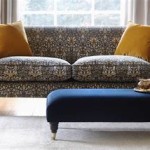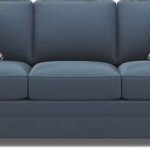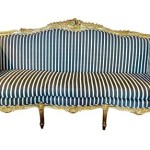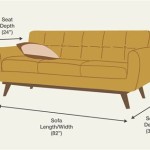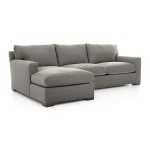Understanding Foam Sofa Cushion Inserts: A Comprehensive Guide
Foam sofa cushion inserts are integral to furniture comfort and longevity. They provide the support, shape, and aesthetic appeal that defines a sofa's overall value. Understanding the different types of foam, their properties, and how to select the appropriate insert is crucial for both manufacturers and consumers seeking to maintain or upgrade their seating.
The primary function of foam inserts is to distribute weight evenly, preventing pressure points and ensuring a comfortable seating experience. The correct choice of foam contributes significantly to posture support and can alleviate discomfort associated with prolonged sitting. Furthermore, foam helps maintain the structural integrity of the sofa, preventing sagging and premature wear of the upholstery.
The market offers a diverse range of foam types, each with distinct characteristics that cater to specific needs and preferences. Factors such as density, firmness, and resilience play a crucial role in determining the suitability of a particular foam for sofa cushions.
Key Considerations When Selecting Foam Sofa Cushion Inserts
Selecting the appropriate foam insert requires careful consideration of several factors, including the intended use of the sofa, the desired level of firmness, and the expected lifespan of the cushion. Evaluating these factors helps ensure a comfortable and durable seating solution.
Density: Foam density is a crucial indicator of quality and durability. It refers to the weight of the foam per cubic foot, typically expressed in pounds per cubic foot (lbs/ft³). Higher density foams generally offer superior support and longevity compared to lower density options. For sofa cushions, a density of 1.8 lbs/ft³ or higher is often recommended for optimal performance. Higher density foams resist compression and retain their shape better over time, providing consistent support and preventing the cushion from flattening out.
Lower density foams, while more affordable, tend to break down more quickly and may not provide adequate support for extended periods. These foams are more susceptible to compression set, a phenomenon where the foam loses its ability to return to its original shape after being compressed. This results in sagging and a diminished level of comfort. Lower density foams are generally suitable for cushions that receive light use or for decorative purposes.
Firmness: Foam firmness, also known as indentation load deflection (ILD), measures the force required to compress the foam by a certain percentage. ILD is typically measured in pounds, indicating the amount of weight needed to compress a 4-inch thick foam sample by 25%. A higher ILD rating indicates a firmer foam, while a lower ILD rating signifies a softer foam.
The ideal firmness level depends on personal preference and the intended use of the sofa. Firmer foams provide more support and are often preferred for individuals who require more back support or those who spend extended periods sitting. Softer foams offer a more plush and cushioning feel, suitable for lounging and relaxation. It is essential to strike a balance between firmness and comfort to ensure a satisfying seating experience.
Resilience: Resilience refers to the foam's ability to spring back to its original shape after being compressed. High-resilience (HR) foams exhibit excellent bounce and recover quickly from compression, providing a responsive and comfortable seating surface. HR foams are known for their durability and ability to retain their shape over time.
Foam resilience is important for maintaining the aesthetic appearance of the sofa. Foams with poor resilience tend to wrinkle and sag, giving the sofa a worn and unkempt look. HR foams resist these effects, ensuring that the cushions maintain their shape and appearance for longer.
Types of Foam Commonly Used in Sofa Cushions
The selection of foam types available for sofa cushions is diverse, each offering a unique combination of properties suited to different needs and budgets. Understanding the characteristics of each type is essential for informed decision-making.
Polyurethane Foam: Polyurethane foam is the most widely used type of foam in sofa cushions. It is a versatile and cost-effective option that is available in a range of densities and firmness levels. Polyurethane foam is relatively durable and provides adequate support for most applications.
Standard polyurethane foam offers a good balance of comfort and support and is suitable for everyday use. High-density polyurethane foam provides enhanced durability and support, making it ideal for sofas that receive heavy use. However, polyurethane foam can be susceptible to UV degradation and may yellow over time when exposed to sunlight.
Memory Foam: Memory foam, also known as viscoelastic foam, is a type of polyurethane foam that conforms to the shape of the body, providing customized support and pressure relief. Memory foam is known for its ability to distribute weight evenly and alleviate pressure points, making it a popular choice for individuals with back pain or other discomforts.
Memory foam is more expensive than standard polyurethane foam but can provide a superior level of comfort and support. However, memory foam can retain heat, which may be uncomfortable for some individuals. Gel-infused memory foam helps mitigate this issue by promoting airflow and dissipating heat.
Latex Foam: Latex foam is a natural or synthetic rubber material that offers excellent resilience, support, and breathability. Natural latex foam is derived from the sap of rubber trees and is a sustainable option. Latex foam is known for its ability to conform to the body while providing firm support, making it a good choice for individuals who prefer a more supportive seating surface.
Latex foam is also hypoallergenic and resistant to dust mites and mold, making it a good choice for individuals with allergies or sensitivities. However, latex foam can be more expensive than polyurethane foam and may have a distinct odor that some individuals find unpleasant.
Down and Feather: While not technically a foam, down and feather filling is a traditional option for sofa cushions. Down and feather cushions provide a luxurious and plush feel but offer minimal support. Down and feather cushions require regular fluffing to maintain their shape and can be expensive to clean.
Down and feather cushions are best suited for decorative applications or for individuals who prioritize comfort over support. A combination of down and feathers with a foam core can provide a balance of comfort and support.
Fiberfill: Fiberfill, typically made from polyester fibers, is another alternative to foam. Fiberfill cushions are lightweight and affordable, but they offer minimal support and tend to flatten out quickly. Fiberfill cushions are best suited for decorative applications or for cushions that receive light use.
Fiberfill cushions can be a good option for individuals with allergies, as they are hypoallergenic and resistant to dust mites. However, fiberfill cushions lack the durability and support of foam cushions.
Factors Affecting the Lifespan of Foam Sofa Cushion Inserts
The lifespan of foam sofa cushion inserts is influenced by several factors, including the type of foam, the frequency of use, and the level of care provided. Understanding these factors helps prolong the life of the cushions and maintain their performance.
Foam Quality: As previously mentioned, foam density plays a critical role in durability. Higher density foams are inherently more resistant to wear and tear and will maintain their shape and support for a longer period compared to lower density foams. Investing in higher quality foam from the outset can save money in the long run by reducing the need for frequent replacements.
Usage: The frequency and intensity of use significantly impact the lifespan of foam cushions. Sofas that are used daily or subjected to heavy use will experience more wear and tear compared to sofas that are used infrequently. Rotate cushions regularly to distribute wear evenly and prevent localized compression. Avoid placing heavy objects on the cushions for extended periods, as this can accelerate compression and cause permanent damage.
Maintenance: Regular maintenance can help extend the lifespan of foam cushions. Vacuum cushions regularly to remove dust, dirt, and debris. Spot clean spills immediately to prevent staining and damage. Avoid using harsh chemicals or abrasive cleaners, as these can damage the foam and upholstery. Consider using cushion covers to protect the cushions from dirt, stains, and wear.
Sunlight Exposure: Prolonged exposure to direct sunlight can degrade foam, causing it to become brittle and lose its elasticity. Protect sofas from direct sunlight by using curtains or blinds. Applying a UV protectant spray to the cushions can also help mitigate the damaging effects of sunlight.
Weight and Pressure: Exceeding the recommended weight capacity of the sofa can accelerate the wear and tear on the cushions. Avoid overloading the sofa with excessive weight or pressure, as this can cause the foam to compress and break down prematurely. Encourage users to distribute their weight evenly across the cushions to minimize stress on individual areas.
By understanding the different types of foam available, their properties, and the factors that affect their lifespan, consumers can make informed decisions about selecting and maintaining foam sofa cushion inserts, thereby ensuring a comfortable and durable seating experience for years to come.

Sit Better With Replacement Foam Sofa Cushions Foamite

Replacement Seats And Cushions Foam

Couch Cushion Foam Solutions

Custom Replacement Sofa Cushions Advanced Upholstery

Foam Replacement For Sofa Cushions Plumbs

Replacement Foam Seat Cushions Advanced Upholstery

Thinking About Sofa Cushion Foam Replacement Wefixanysofa Com

Replacement Sofa Cushions Feather For Any Settee

When To Replace Your Sofa Cushions Foamite

Replacement Foam Sofa Cushions Super


